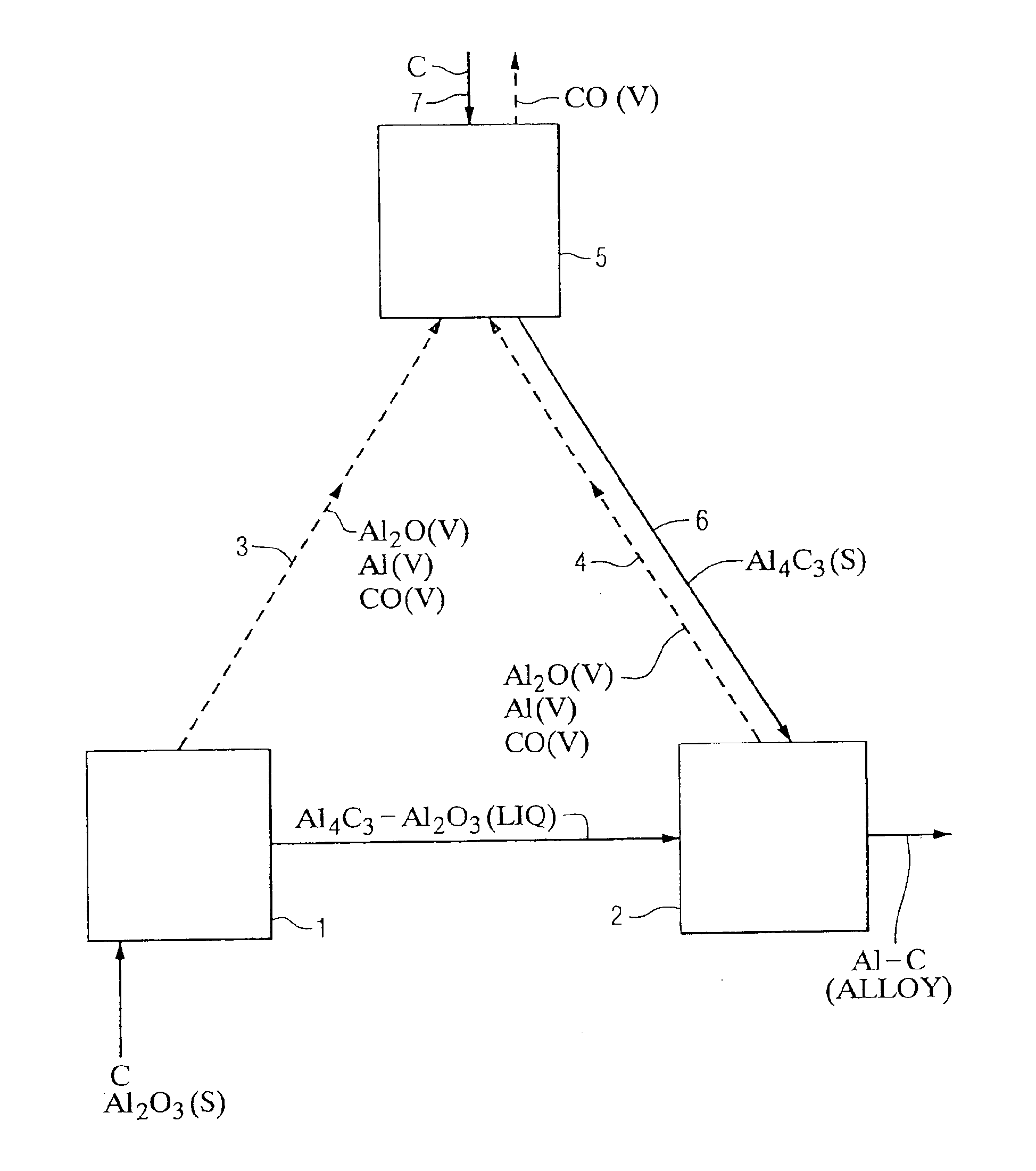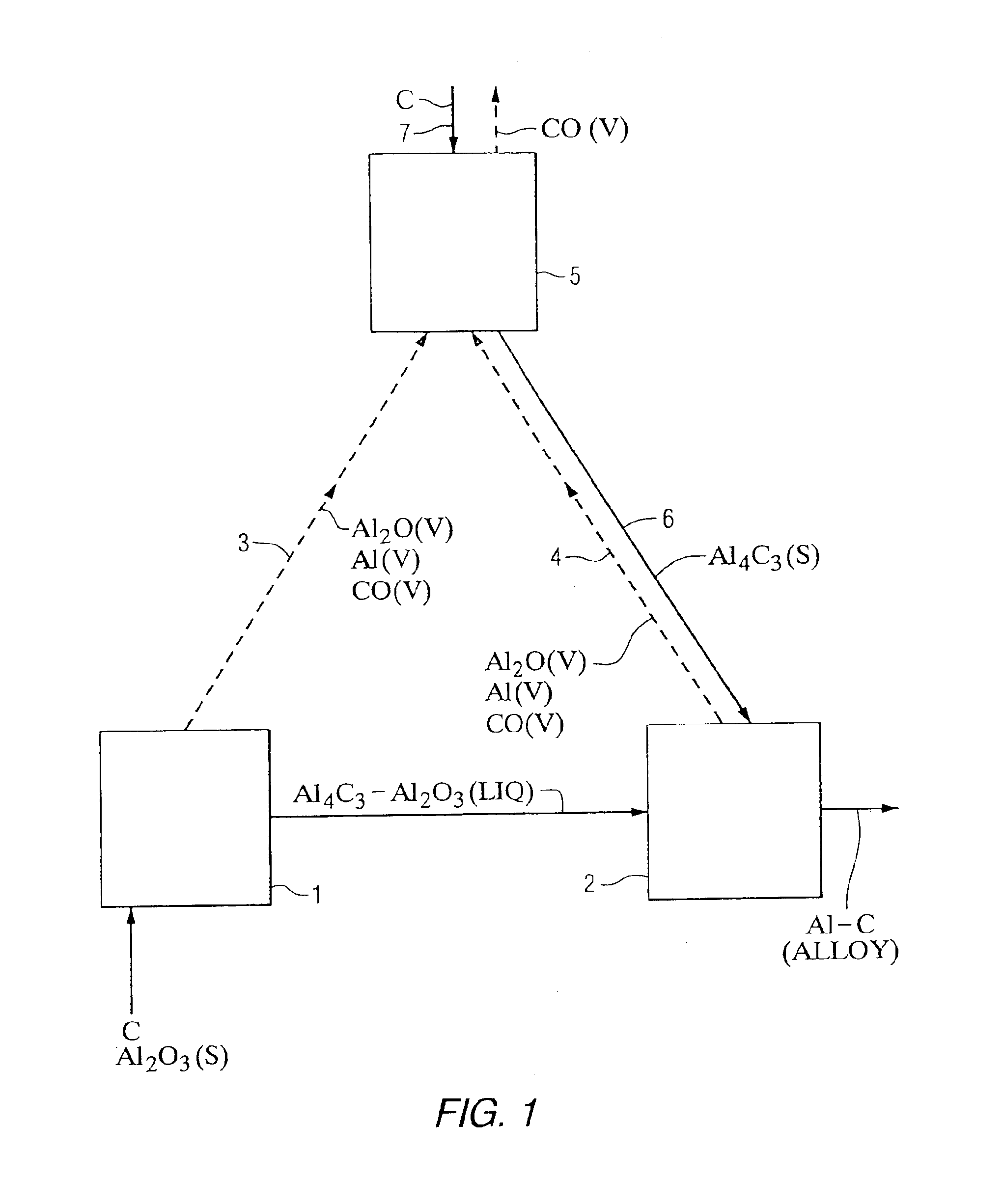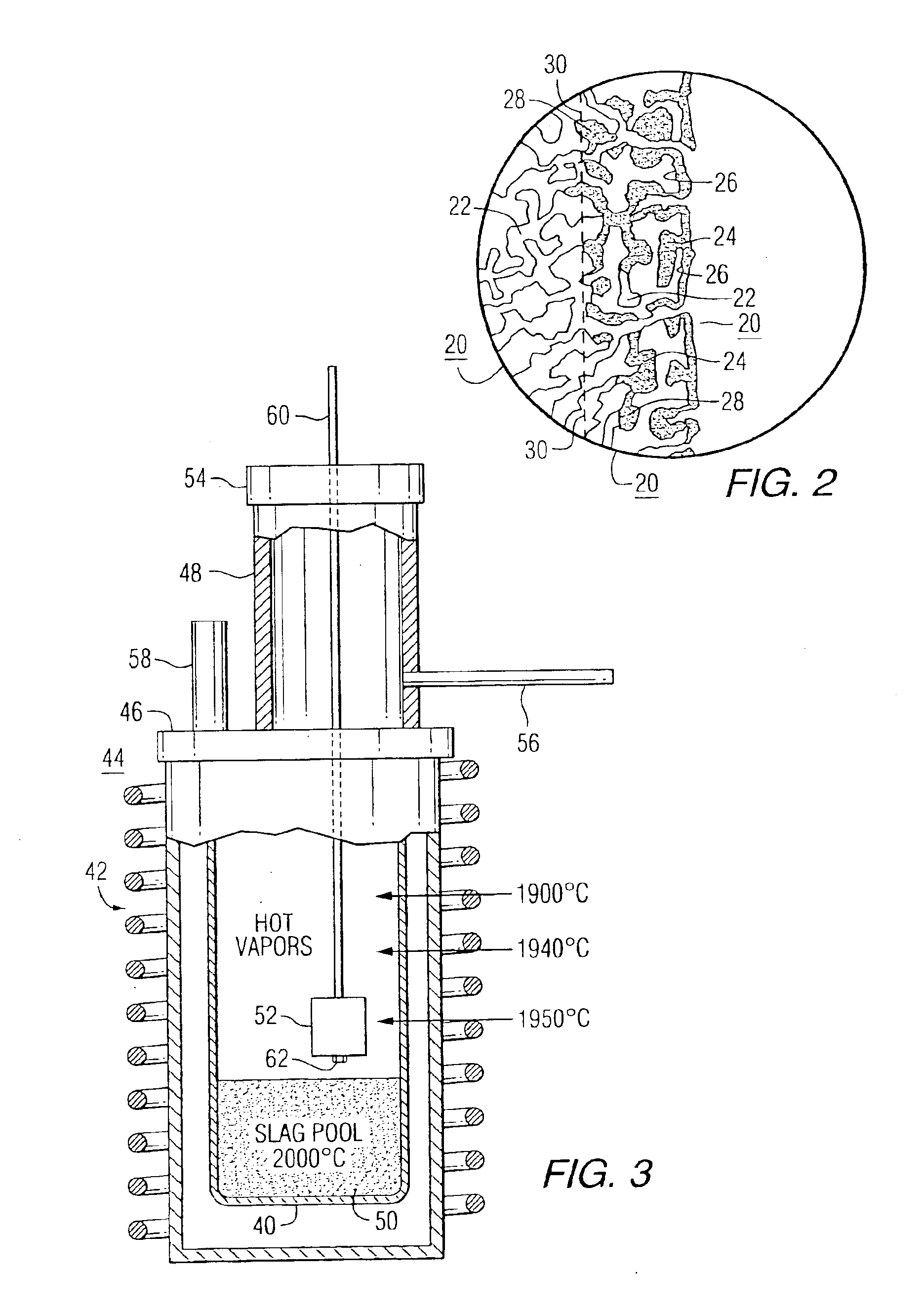Method using selected carbons to react with Al2O and Al vapors in the carbothermic production of aluminum
a carbothermic and carbon-based technology, applied in the direction of combustible gas purification/modification, separation processes, furnaces, etc., can solve the problems of affecting the performance of the catalyst bed, lacking the strength to be used in the counter current reactor, etc., and achieve the effect of increasing the formation rate of al4c3 and affecting the performan
- Summary
- Abstract
- Description
- Claims
- Application Information
AI Technical Summary
Benefits of technology
Problems solved by technology
Method used
Image
Examples
examples
One of the major obstacles in studying the reaction of Al and Al2O gaseous species with carbons is generating these gases in sufficient quantities. To do so, temperatures in excess of 2000° C. are required. A schematic diagram of the specially designed experimental equipment is shown in FIG. 3. The melts used to generate the vapors were heated in a graphite crucible 40 (17.5 cm ID) in a 65 kw induction furnace 42. The reactor 44, having an optical sight tube 58, was fitted with a tight lid 46 and a chimney 48 also with cap 54. About 5 kg to 7 kg of a (Al2O3-Al4C3) slag 50 was used as the melt to generate the vapors. The temperature of the melt and at the sample 52 location were measured with a tungsten-rhenium (5% W—Re)-(26% W—Re) thermocouple which is capable of measuring temperatures up to 2200° C. A two color optical pyrometer was also used to measure the temperature. The two temperature measurement techniques agreed within 10° C. The furnace was continuously flushed with argon t...
PUM
| Property | Measurement | Unit |
|---|---|---|
| density | aaaaa | aaaaa |
| pore diameter | aaaaa | aaaaa |
| porosity | aaaaa | aaaaa |
Abstract
Description
Claims
Application Information
 Login to View More
Login to View More - R&D
- Intellectual Property
- Life Sciences
- Materials
- Tech Scout
- Unparalleled Data Quality
- Higher Quality Content
- 60% Fewer Hallucinations
Browse by: Latest US Patents, China's latest patents, Technical Efficacy Thesaurus, Application Domain, Technology Topic, Popular Technical Reports.
© 2025 PatSnap. All rights reserved.Legal|Privacy policy|Modern Slavery Act Transparency Statement|Sitemap|About US| Contact US: help@patsnap.com



